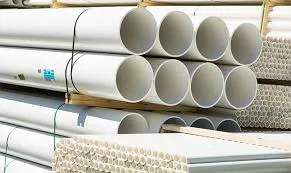Dec . 04, 2024 16:56 Back to list
HDPE Corrugated Pipe Dimensions and Specifications from the Manufacturer
Understanding HDPE Corrugated Pipe Sizes and Factories
High-Density Polyethylene (HDPE) corrugated pipes are widely used in various civil engineering and construction applications due to their strength, flexibility, and resistance to chemicals and environmental conditions. These pipes are predominantly utilized for stormwater management, drainage systems, and sewage applications. Understanding the sizes available and the manufacturing process of HDPE corrugated pipes can help engineers and contractors make informed decisions on the selection of materials for their projects.
What is HDPE?
High-Density Polyethylene is a type of thermoplastic made from petroleum. It is known for its high strength-to-density ratio, making it an ideal material for piping systems. HDPE is resistant to impact, corrosion, and weathering, which extends the lifespan of systems designed for water drainage and wastewater management. The flexibility of HDPE also makes it suitable for various site conditions and installation methods, including trenchless technology.
Sizes of HDPE Corrugated Pipes
HDPE corrugated pipes come in various sizes, catering to different application needs. The sizes can vary significantly depending on the manufacturer, but they typically range from small diameters of around 4 inches (100 mm) up to large diameters of 48 inches (1200 mm) or more. The most common sizes include
- 4 to 12 inches (100 to 300 mm) Used for residential drainage, stormwater systems, and smaller industrial applications. - 15 to 24 inches (400 to 600 mm) Suitable for larger residential and commercial drainage solutions and non-pressurized applications. - 30 inches (750 mm) and above Often used for municipal drainage systems, large-scale stormwater management, and industrial applications.
The wall thickness and the corrugation profile also influence the performance characteristics of the pipes. Manufacturers often offer standard weights, strengths, and performance ratings that comply with industry standards like ASTM and AASHTO.
Manufacturing of HDPE Corrugated Pipes
The manufacturing process of HDPE corrugated pipes typically involves several key steps
hdpe corrugated pipe sizes factory

1. Raw Material Preparation HDPE resin pellets are prepared and tested for quality to ensure that they meet the required specifications.
2. Extrusion The resin is heated and melted in an extruder, where it is forced through a die to create the desired pipe shape. The corrugated design is achieved by forming the pipe into a series of alternating ribs and grooves, which enhances strength while reducing material usage.
3. Cooling and Solidification Once the pipe exits the die, it passes through a cooling system where it is cooled to solidify the shape. This process may involve air or water cooling methods.
4. Cutting and Quality Control After cooling, the pipe is cut to specific lengths based on customer orders. Quality control checks are conducted to ensure that the dimensions, wall thickness, and performance characteristics meet industry standards.
5. Marking and Packaging Each pipe is marked with information such as size, material, and manufacturer details. Finally, the pipes are packaged for shipment.
The Role of Factories in the Production Process
The factories that produce HDPE corrugated pipes play a crucial role in the overall quality and consistency of the products. A well-equipped manufacturing facility will have advanced machinery capable of maintaining precise control over the extrusion process and ensuring uniformity in wall thickness and dimensions. Furthermore, reputable manufacturers often invest in research and development to innovate and improve their products, incorporating the latest technology to enhance performance and compliance with environmental regulations.
Conclusion
In summary, HDPE corrugated pipes are essential components in modern drainage, sewer, and stormwater management systems. With a wide range of sizes and a strong, flexible composition, these pipes offer durability and efficiency in various applications. Understanding the manufacturing process and the available sizes can help engineers and contractors effectively choose the right products for their projects, ensuring long-lasting performance and reliability. With continued advancements in manufacturing technology, the future of HDPE pipes looks promising, paving the way for sustainable and efficient infrastructure solutions.
-
High-Quality PVC Borehole Pipes Durable & Versatile Pipe Solutions
NewsJul.08,2025
-
High-Quality PVC Perforated Pipes for Efficient Drainage Leading Manufacturers & Factories
NewsJul.08,2025
-
High-Quality PVC Borehole Pipes Durable Pipe Solutions by Leading Manufacturer
NewsJul.08,2025
-
High-Quality PVC Borehole Pipes Reliable PVC Pipe Manufacturer Solutions
NewsJul.07,2025
-
High-Quality UPVC Drain Pipes Durable HDPE & Drain Pipe Solutions
NewsJul.07,2025
-
High-Quality Conduit Pipes & HDPE Conduit Fittings Manufacturer Reliable Factory Supply
NewsJul.06,2025

